In 1961, in addition to launching science satellites, sending probes to the Moon, and taking on the challenge to land men on the Moon by the end of the decade, NASA also set its sights on exploring our planetary neighbors. The agency gave responsibility for planetary exploration to NASA’s Jet Propulsion Laboratory (JPL) in Pasadena, California. Turning their attention first to Venus, JPL designed and built two Mariner spacecraft, based on their Ranger probes to the Moon, to explore the mysterious cloud-covered planet. Mariner 1 lifted off first on July 22, 1962, but when its rocket veered off course, the Range Safety Officer had to send a destruct command to the vehicle. Engineers quickly identified and fixed the problems and Mariner 2 began its journey to Venus on Aug. 27.
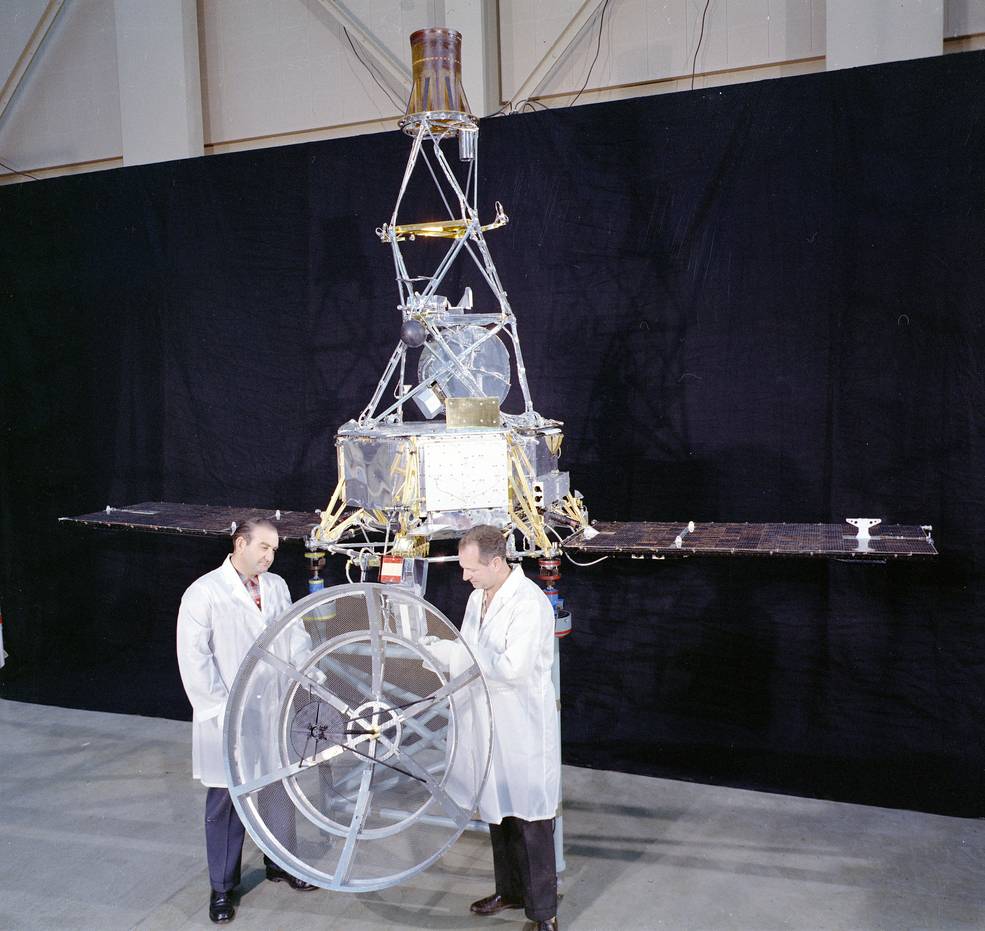
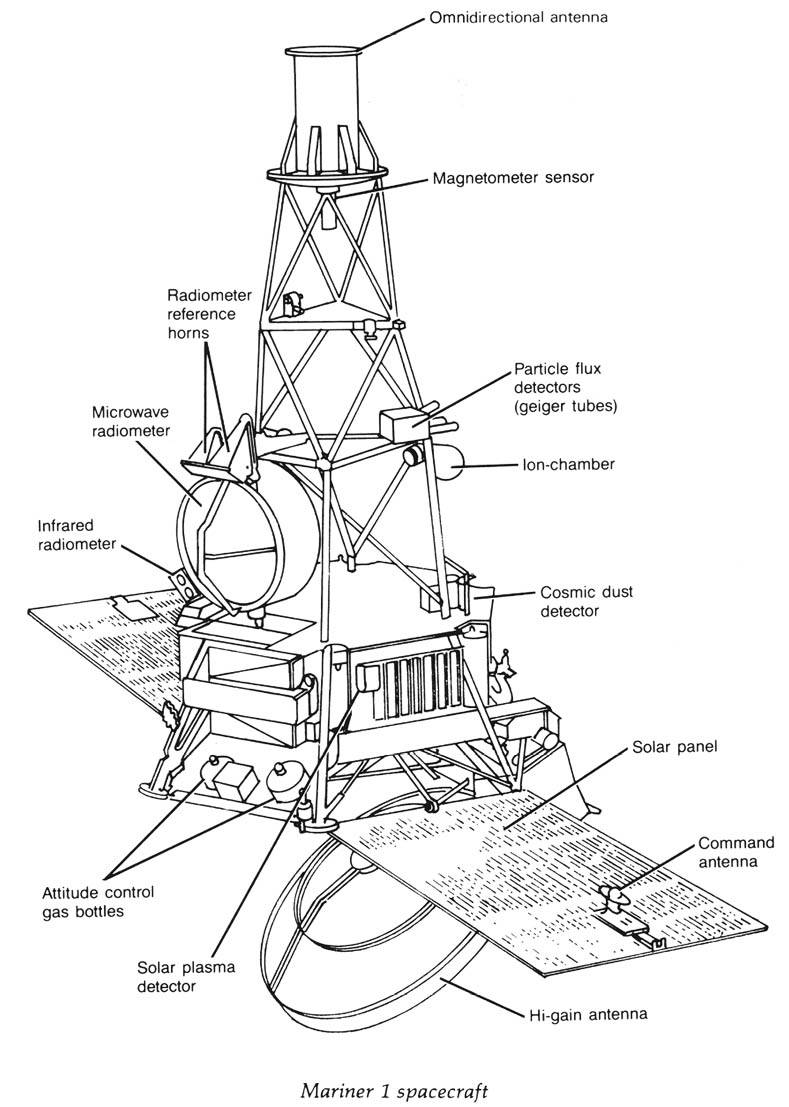
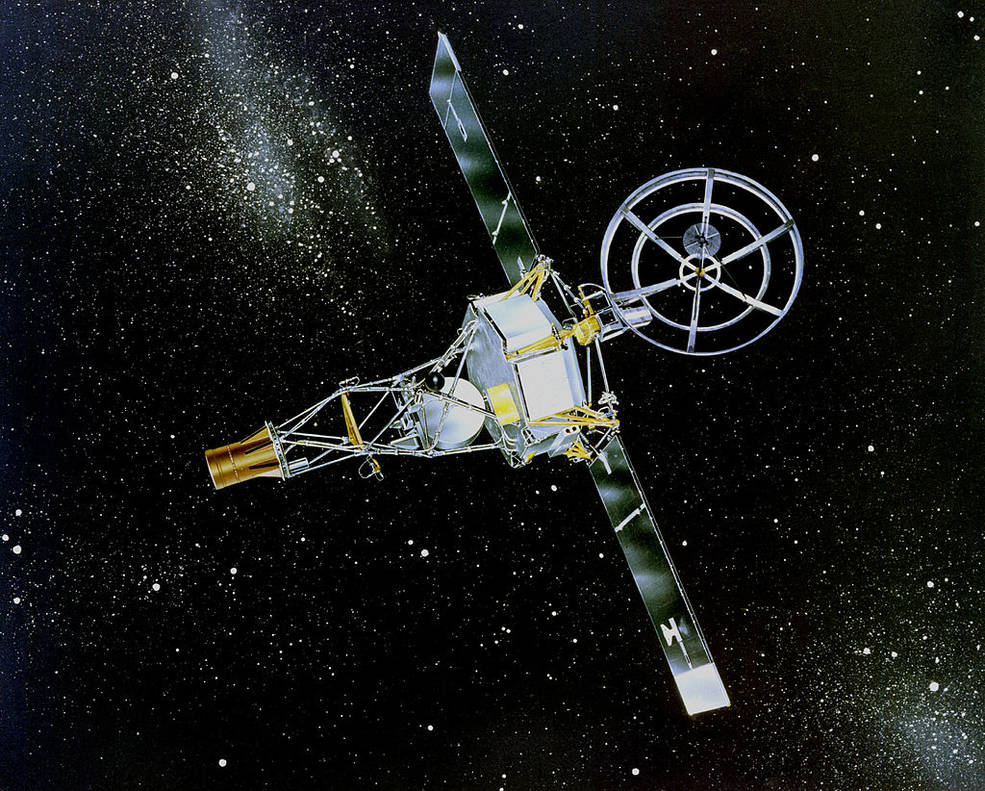
Left: Engineers prepare Mariner 1 at the Spacecraft Assembly Facility at NASA’s Jet Propulsion Laboratory in
Pasadena, California. Middle: A schematic of Mariner 1 showing its major components and scientific
instruments. Right: Illustration of Mariner 1 as it would appear in interplanetary space.
To take advantage of the 1962 launch window to Venus, JPL initially planned to send two 1,250-pound spacecraft called Mariner A to explore Earth’s nearest planetary neighbor. The spacecraft would use an upper stage called Centaur atop an Atlas booster that had sufficient thrust to send such a heavy vehicle on a path to Venus. When in the summer of 1961 the Centaur ran into delays, JPL engineers needed to downsize the spacecraft by two-thirds to fit onto the smaller Atlas-Agena booster, in less than a year. The only practical solution involved taking a Ranger lunar spacecraft, also built by JPL, and adapting it to fly to Venus. At first, designers believed the 447-pound spacecraft could only accommodate 25 pounds of scientific instruments, but eventually it carried 46 pounds. Experiments for investigating Venus and interplanetary space included:
- A crystal microphone for measurement of the density of cosmic dust.
- A proton detector for counting low-energy protons in the solar wind.
- Two Geiger-Müller (GM) tubes and an ion chamber, for measuring high-energy charged particles in interplanetary space and in the Venusian equivalent of Earth’s Van Allen Belts (later shown not to exist).
- A special-purpose GM tube for measuring lower energy radiation, particularly near Venus.
- A three-axis fluxgate magnetometer for measuring the Sun’s and Venus’ magnetic fields.
- A microwave radiometer for measuring the temperature of the planet’s surface and its cloud tops.
- Two infrared optical sensors for parallel measurement of the temperature of Venus.
By late spring 1962, JPL engineers had built two flight-ready spacecraft and one spare, and shipped the flight units to the Cape Canaveral Air Force Station, now Cape Canaveral Space Force Station, in Florida, to prepare them for launch. The 56-day launch window extended from July 18 to Sep. 12.
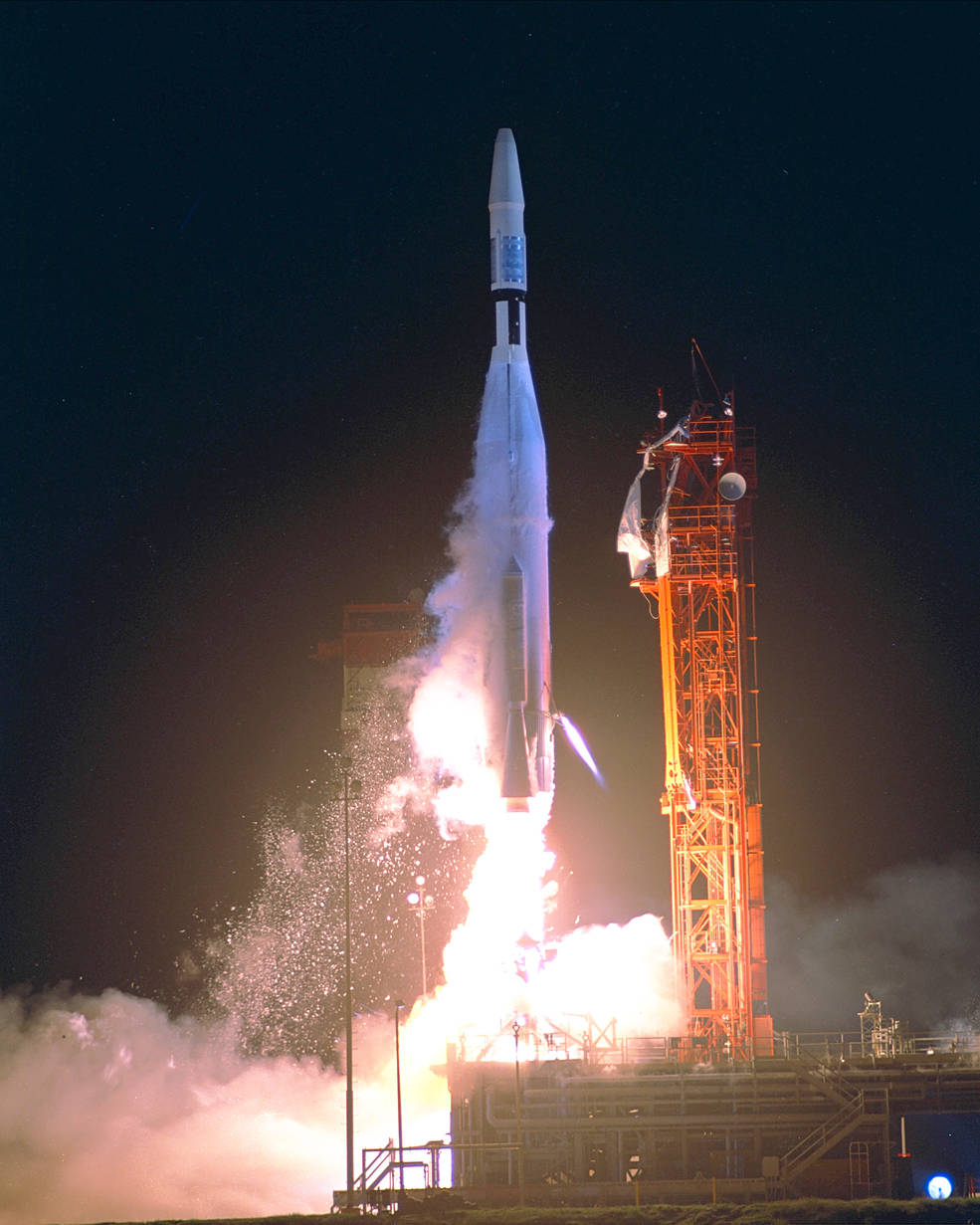
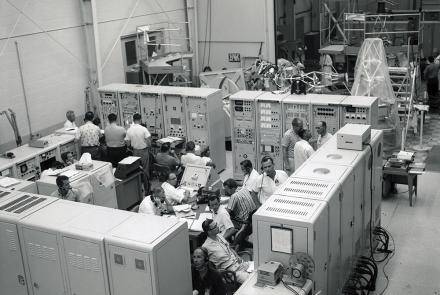

Left: Liftoff of Mariner 1 from Launch Pad 12 at Cape Canaveral Air Force Station, now Cape Canaveral Space
Force Station in Florida. Middle: Engineers in the control center monitor the launch of Mariner 1.
Right: Image of the Atlas booster seconds after its destruction by the Range Safety Officer.
After one launch scrub, Mariner 1 lifted off atop its Atlas-Agena rocket from Launch Pad 12 at Cape Canaveral Air Force Station, now Cape Canaveral Space Force Station in Florida, in the predawn hours of July 22, 1962. With a launch on that date, flight planners expected Mariner 1 to encounter Venus on Dec. 8. At first, the mission seemed to proceed normally. But soon controllers noticed that the rocket began to fishtail and veer off course. Concerned that the off-course rocket might crash onto populated areas or into shipping lanes, 293 seconds after liftoff and a mere six seconds before the Agena and the spacecraft separated from the wayward Atlas, the Range Safety Officer had no choice but to send the destruct command to the Atlas, plunging Mariner 1 into the Atlantic Ocean and prematurely ending its mission. The hardy little spacecraft continued to send data for more than a minute as it fell toward the sea. Failure analysis revealed that two problems conspired to doom Mariner 1. A known and usually self-correcting problem occurred with an Atlas booster antenna losing lock with the ground. Normally, the rocket would continue on a pre-programmed trajectory until it regained contact with the ground. But a software error, the omission of an overbar for the symbol R for radius (R instead of R̅) in an equation, caused the program to not respond as planned. It should be noted the omission was not a hyphen, as sometimes erroneously reported. Engineers quickly fixed the problems, and sent Mariner 2 on its way to Venus on Aug. 27. It completed the first remote encounter with another planet on Dec. 14, 1962, returning valuable information about our celestial neighbor.
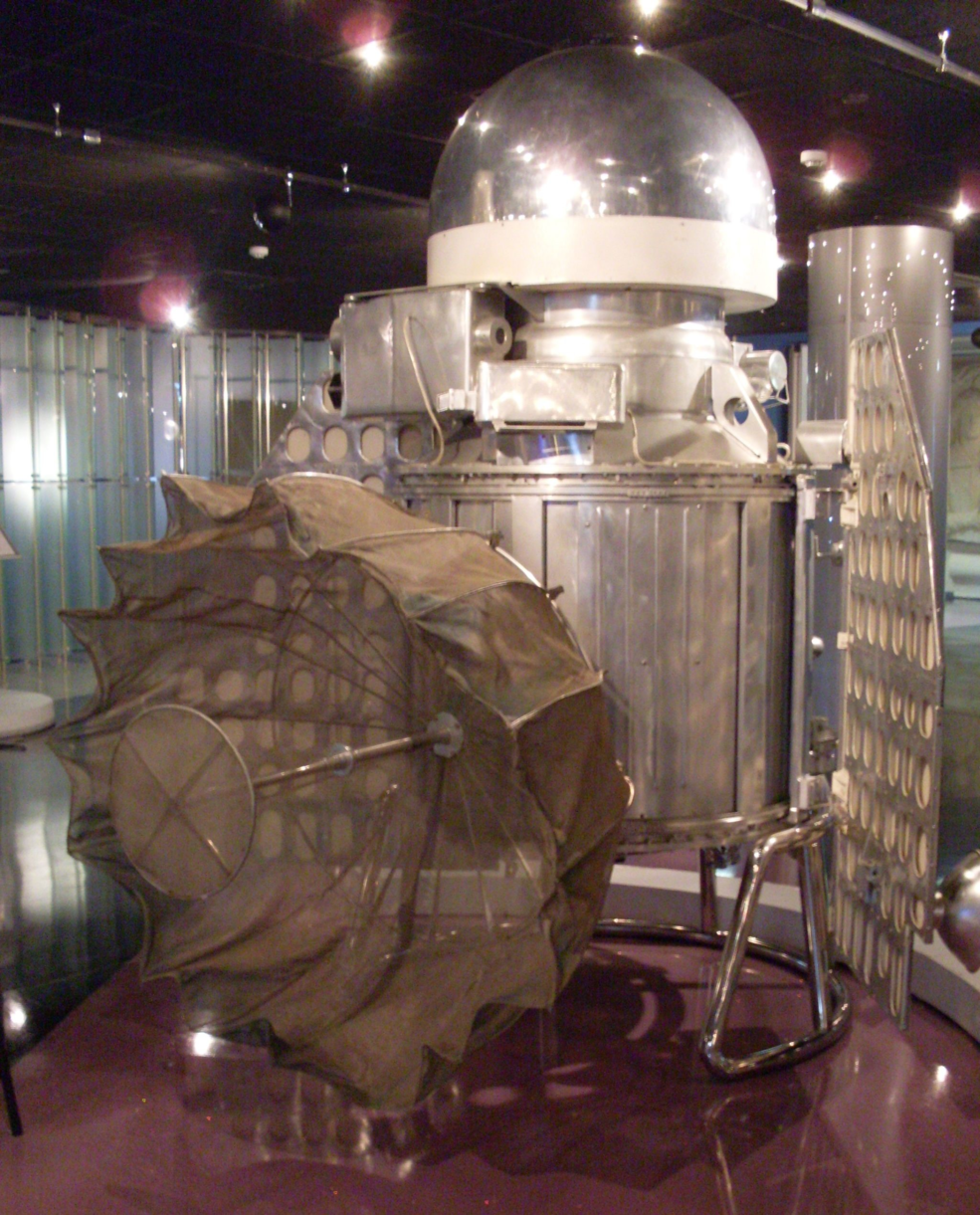
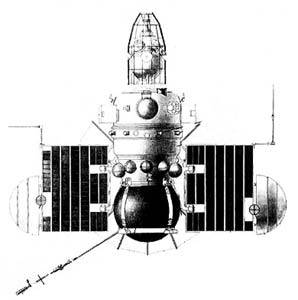
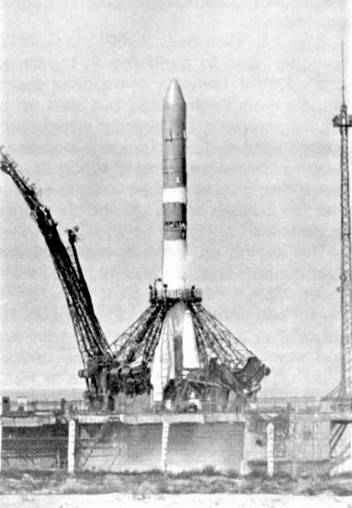
Left: A model of the Soviet Venera 1 spacecraft. Middle: Schematic diagram of the lander version of the 1962
Soviet Venus spacecraft. Right: Soviet Venus spacecraft on its launch pad at the Baikonur Cosmodrome in
September 1962. Image credits: Courtesy RKK Energiya.
While Mariner 1 constituted the first American attempt to reach another planet, the Soviet Union made the first attempts to reach Venus the previous year. Of two tries in 1961, only one, called Venera 1, left Earth orbit, on Feb. 12. Unfortunately, by early March, with the spacecraft 4.6 million miles from Earth, Soviet controllers lost contact with it. Although the Soviets had intended Venera 1 to crash onto Venus, it likely flew by the planet at a distance of 62,000 miles on May 19, 1961, returning no data. Taking advantage of the same launch window to Venus as Mariner 1 and 2, the Soviet Union planned to fly three spacecraft to the cloudy planet, including two landers and a flyby mission. Due to separate escape stage failures, none of the three spacecraft left Earth orbit following launches on Aug. 25, Sep. 1, and Sep. 12, 1962.
For more on Mariner 1, visit https://nssdc.gsfc.nasa.gov/nmc/spacecraft/display.action?id=MARIN1
To be continued…


























